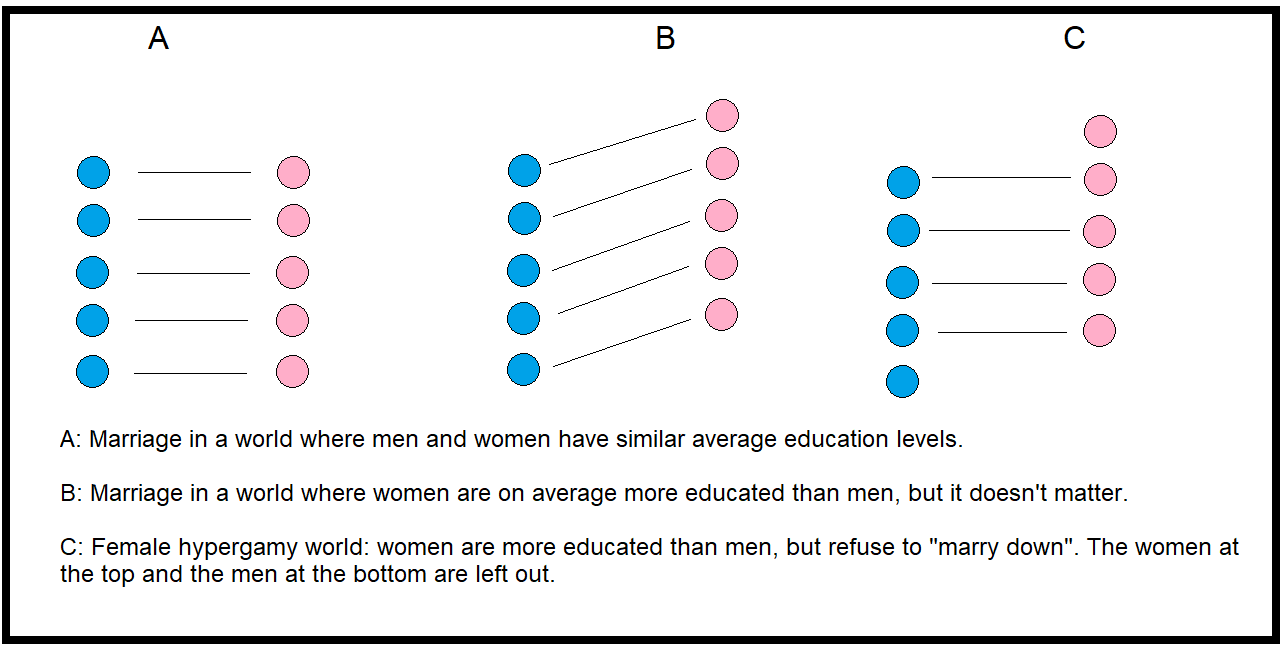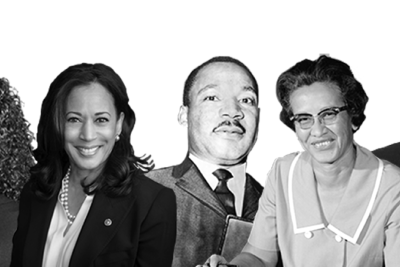
Hypergamy: Understanding Hypergamists and Their Choices

Hypergamy, a term derived from the Greek words "hyper" (over) and "gamos" (marriage), refers to the practice of seeking a spouse of higher socioeconomic status or social rank. This concept plays a significant role in modern relationships, influencing the choices of individuals who identify as hypergamists. By understanding hypergamy and its various aspects, we can gain insights into the motivations and implications behind such choices, as well as how these tendencies manifest across different cultures and societies.
Throughout history, hypergamy has been a key aspect of social structures, essentially acting as a means of upward mobility for individuals and families. As we delve deeper into the subject of hypergamy, it becomes crucial to explore its definition, historical context, cultural manifestations, and the characteristics and motivations of hypergamists. Understanding these dimensions can help clarify the complexities surrounding hypergamy in both contemporary and historical frameworks.
- Definition of Hypergamy
- Historical Context of Hypergamy
- Hypergamy Across Cultures
- Characteristics of Hypergamists
- Motivations Behind Hypergamous Choices
- The Role of Social Status and Economic Factors
- Hypergamy in Modern Relationships
- Consequences and Criticisms of Hypergamy
- Case Studies of Hypergamists
- Conclusion: The Future of Hypergamy in Society
Definition of Hypergamy
Hypergamy is defined as the act of marrying or forming a relationship with a person who is of superior socioeconomic status or social standing. This practice can encompass various factors, including wealth, education, influence, and social class. Individuals who engage in hypergamous relationships, known as hypergamists, are often motivated by the desire for security, stability, and opportunities that may arise from such unions.
Types of Hypergamy
There are various forms of hypergamy, including:
- Social Hypergamy: Marrying into a higher social class or pedigree.
- Economic Hypergamy: Seeking financial stability through a partner with more wealth.
- Cultural Hypergamy: Choosing a partner from a different culture that is perceived as more favorable.
Historical Context of Hypergamy
To fully grasp the concept of hypergamy, it is essential to consider its historical implications. In ancient societies, marriage was often arranged and heavily influenced by the families’ social standing and wealth. Living within a structured class system, individuals were frequently expected to marry within their social circles unless they were able to hypergamously elevate themselves and their status through marriage.
Evolution Over Time
The concept and implications of hypergamy have evolved over centuries, with notable changes observed during periods of social and economic upheaval. For instance, during significant events like the industrial revolution, emerging middle classes saw an increasing number of hypergamous marriages as individuals sought to secure a better future through advantageous partnerships.
Hypergamy Across Cultures
Hypergamy is not limited to a single culture or region; it transcends geographical boundaries and manifests uniquely in various societies. Cultural norms and values significantly shape individuals' perceptions and practices regarding hypergamy, dictating whether such pursuits are embraced or criticized.
Western Culture
In many Western societies, hypergamy is often portrayed negatively, with stereotypes associating hypergamists with opportunistic behavior. However, as social structures continue to shift and evolve, the importance of marrying for love and emotional connection also takes precedence alongside financial considerations.
Eastern Cultures
In contrast, some Eastern cultures have traditionally viewed hypergamy in a more favorable light. For instance, arranged marriages have facilitated hypergamous unions that align with family aspirations and societal expectations. These unions may provide advantages not only to the immediate couple but also to their extended families, enhancing their status and wealth within the community.
Characteristics of Hypergamists
While hypergamy can manifest in various forms, individuals who engage in this practice, known as hypergamists, tend to exhibit specific characteristics that influence their relationship choices. The key traits often include:
- Ambition: A strong drive to achieve personal and socio-economic goals.
- Resourcefulness: An ability to leverage relationships for mutual benefit.
- Social Savvy: Skill in navigating social environments to identify potential partners.
Motivations Behind Hypergamous Choices
The motivations driving hypergamous choices can be multifaceted. Some primary reasons include:
- Financial Security: The pursuit of a partner with greater financial resources aids in achieving a stable future.
- Social Status: Elevating one’s social standing through strategic partnerships can provide an enhanced lifestyle.
- Emotional Fulfillment: Candidates with higher social or economic status may be perceived as more capable of providing emotional and psychological support.
Social status and economic factors are cornerstones of the hypergamous practice. In contemporary society, the disparity between social classes has led many individuals to consider financial stability as paramount when choosing a partner.
Impact of Economic Trends
Economic trends, such as rising living costs, have significantly influenced hypergamy. As individuals prioritize financial well-being over romantic love, the traditional notion of marriage as a partnership for mutual growth transitions into a more transactional relationship framework.
Hypergamy in Modern Relationships
In today's fast-paced society, the increase in hypergamous relationships is becoming more prevalent. Factors such as advanced education, changing gender roles, and shifting cultural perceptions have resulted in evolving dynamics surrounding hypergamists. This evolution reflects broader societal changes and how individuals view personal relationships.
Online Dating and Hypergamy
The rise of online dating platforms has also reshaped the landscape of hypergamy. Dating apps often enable users to filter potential partners by financial attributes, thereby facilitating easier access for hypergamists to find individuals who meet their expectations for social and economic status.
Consequences and Criticisms of Hypergamy
As with any social phenomenon, hypergamy has its share of consequences and criticisms. Detractors argue that such practices reinforce class divisions and perpetuate cycles of inequality. While some view hypergamy as a means of empowerment, others perceive it as a transaction that undermines the values of love and commitment.
The implications of hypergamy can affect both personal and societal levels. In personal relationships, it can lead to imbalances of power dynamics, while on a societal scale, it can perpetuate stereotypes and contribute to the alienation of certain groups.
Case Studies of Hypergamists
Examining real-world examples of hypergamous relationships provides insight into the motivations and challenges faced by hypergamists. Each case illustrates unique relational dynamics that can arise, revealing how individual choices can shape experiences and perceptions.
Case Study 1: The Rise of Celebrity Relationships
Many hypergamous unions often come to light in the realm of celebrity culture, where fame and wealth influence relationship choices. For instance, when lesser-known individuals marry into wealth and status, these unions can exemplify clear instances of hypergamy.
Case Study 2: The Influence of Educational Attainment
Educational backgrounds also play a crucial role in contemporary hypergamous journeys. Many individuals prioritize educational attainment when searching for a partner, often leading to significant considerations about economic stability and social status, thus shaping their hypergamous choices.
Conclusion: The Future of Hypergamy in Society
In conclusion, hypergamy continues to be a relevant aspect of societal relationships, reflecting both personal desires and broader economic trends. As cultural perceptions shift and social structures evolve, the nature of hypergamous unions will likely adapt accordingly. Understanding hypergamy and the characteristics of hypergamists can foster more nuanced conversations surrounding relationships, moving away from stigmatization toward a more comprehensive examination of choices guided by ambition and aspiration.
Ultimately, the discourse on hypergamy is likely to remain pertinent as society navigates the complexities of relationships, aspirations, and the interweaving of love and economic considerations. The future may hold new narratives surrounding hypergamy as individuals continue to redefine their desires and expectations in an ever-evolving world.
Did you find this article helpful? Hypergamy: Understanding Hypergamists and Their Choices See more here Education.
Leave a Reply






Related posts